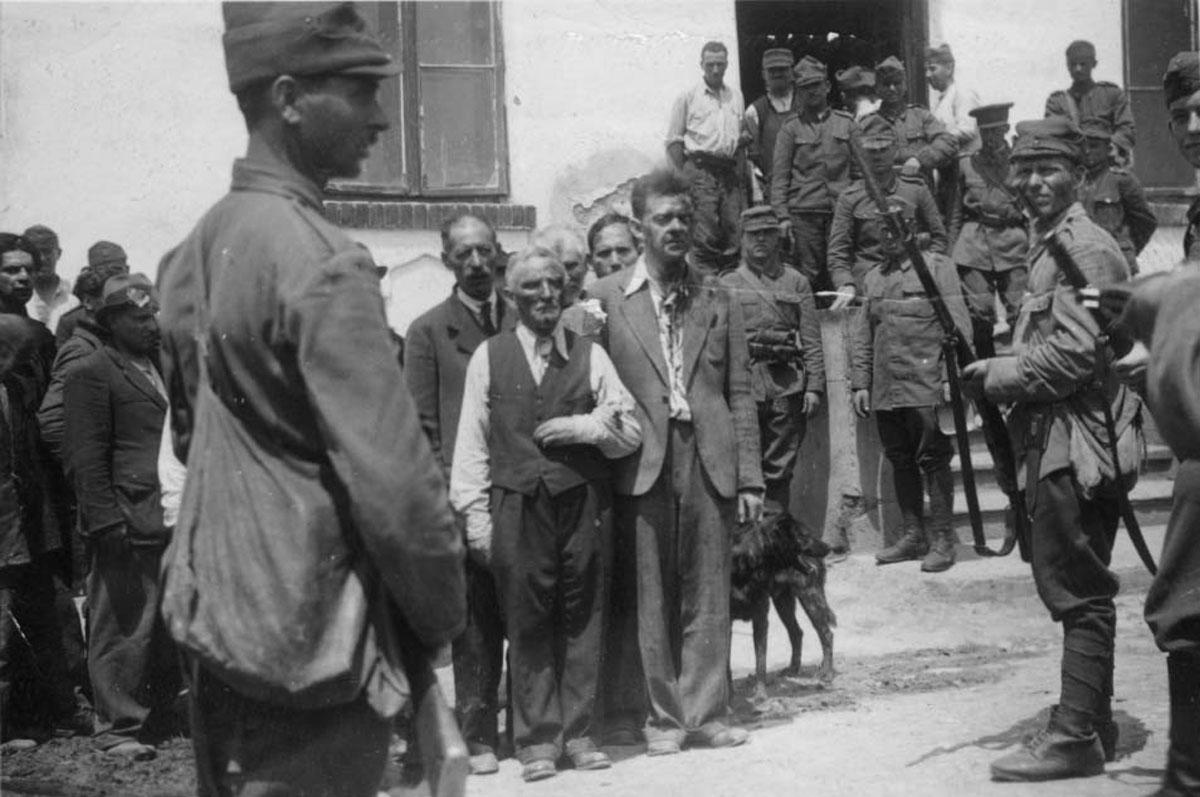On 28 June 1941, Romanian and German soldiers, police, and masses of residents participated in an assault on the Jews of Iasi. Thousands were murdered in their homes and in the streets; additional thousands were arrested and taken to police headquarters. The next day, Romanian soldiers shot thousands of Jews who had been held in the police headquarters yard. The approximately 4,300 survivors of the assault and other Jews who had been rounded up from all parts of Iasi, were loaded onto sealed boxcars and deported. Some 2,600 perished en route due to thirst and suffocation.
In September 1940, Ion Antonescu rose to power in Romania, and systematic persecution of the Jews began in the city of Iasi. During the "Legionnaires Rebellion" in January 1941, when the Jews of Bucharest were subjected to violent riots, the leaders of the Jewish community bribed the heads of the Iron Guard, and it is assumed that as a result, Iasi's Jews were not persecuted at this time, although during this period, the Romanians evacuated Jews from the surrounding villages and towns to Iasi, such that the local population reached some 51,000.
In June 1941, on the eve of Romania's invasion of the Soviet Union, German and Romanian military units were assembled in Iasi. Amid rising tension between Jews and non-Jews in the city, rumors circulated that Jews had signalled the Soviet planes that bombarded the city. As a result, on the evening of 28 June, Romanian and German soldiers, police, and masses of residents participated in an assault on the Jews of Iasi. Thousands were murdered in their homes and in the streets; additional thousands were arrested by patrols of Romanian and German soldiers and taken to police headquarters. The following day, Romanian soldiers shot many of them. The approximately 4,300 survivors of the assault and other Jews who had been rounded up from all parts of Iasi, were loaded onto sealed boxcars and transported to two locations: Cãlãraşi and Târgu Frumos. Some 2,600 perished en route due to thirst and suffocation.
On 2 July 1941, the police reported to Antonescu that more than 8,000 Jews had been murdered in Iasi and on the trains departing from there. In the Romanian War Crimes trials in 1948, the court ruled that more than 10,000 Jews had been murdered.
Yad Vashem Photo Archives 1214/2







